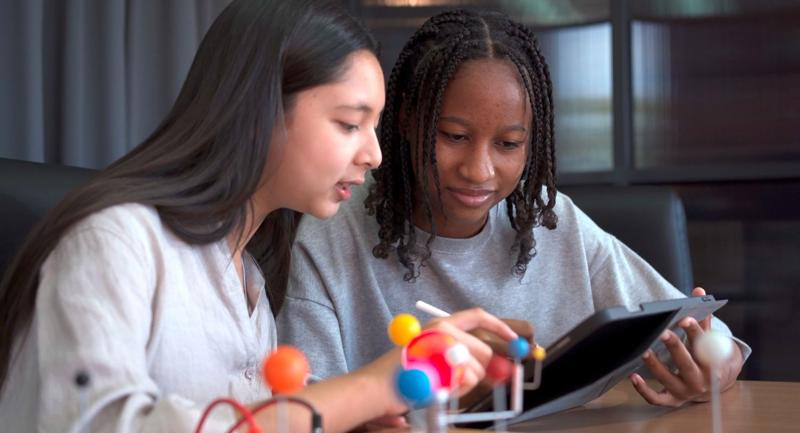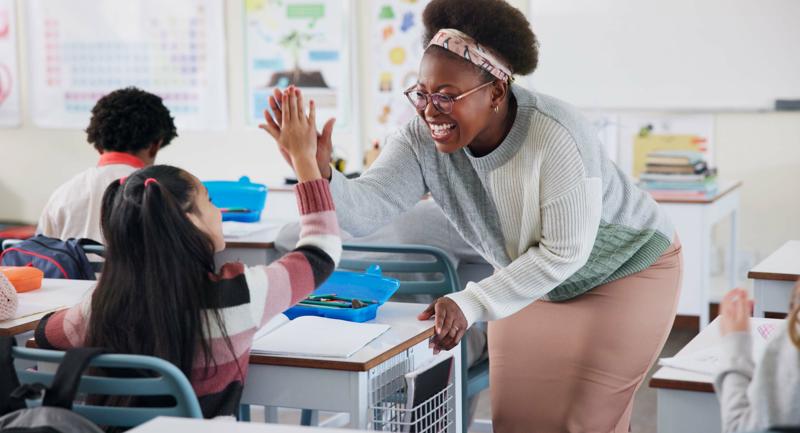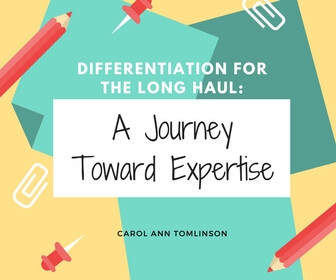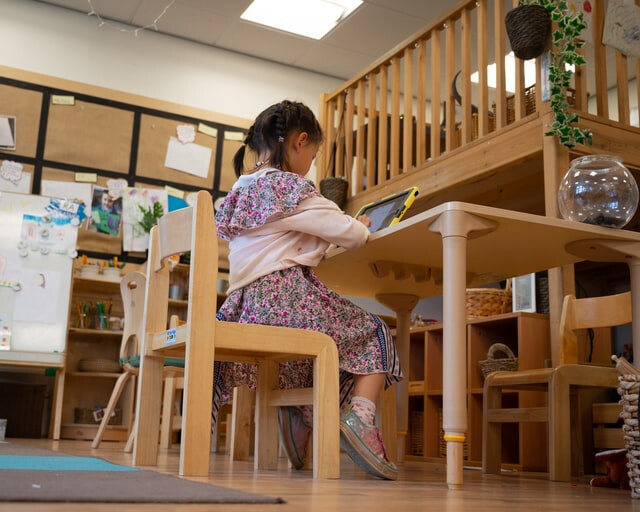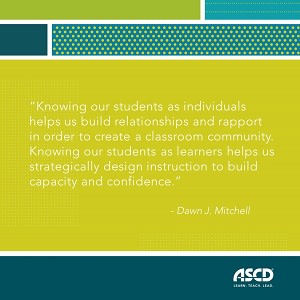"Stories are a communal currency of humanity." — Tahir Shah, In Arabian Nights
Tahir Shah’s words capture the essence of storytelling's transformative power, a power that I, too, have experienced firsthand. Growing up as an immigrant student in the U.S. public school system, my formative years were marked by an education that often felt disconnected from my own reality. The stories and characters that filled my textbooks and lessons rarely mirrored my experiences or the rich cultural heritage I carried with me. This lack of representation left a void—a sense of being on the periphery of the very narratives I was supposed to learn from.
It was only during my college years that this narrative began to shift. For the first time in my education journey, I was exposed to literature and case studies that echoed my background, my struggles, and my dreams. It's because I took an African American Literature class taught by a Black woman, who exposed me to work where I saw myself. Although I had Black teachers in my previous schooling and attended public school in a diverse city, the traditional curriculum I encountered did not reflect me. It was then that I understood the power of seeing oneself in stories. This experience was not just enlightening but transformative, fundamentally changing my approach to education and underscoring the critical role storytelling plays in bridging cultural and educational gaps.
It was then that I understood the power of seeing oneself in stories.
As educators, our role extends beyond imparting knowledge; we also need to humanize the educational journey. By sharing our own stories, we show our humanity, building a bridge of empathy, understanding, and connection with our students. And when we incorporate a wide range of stories into our classroom instruction—our own, those of our students, and stories from across the globe—we create learning experiences that resonate on a deeper level.
Embracing a multitude of perspectives in our teaching not only combats stereotypes, but also celebrates the unique backgrounds of each student, nurturing a sense of inclusion and belonging. By integrating the full spectrum of human experience into our curriculum, we honor the diversity of our classrooms and uplift voices that have too often gone unheard. The strategic use of storytelling becomes a transformative force, a means to close the gaps in opportunity and understanding that exist within our educational systems. Let's explore storytelling strategies that educators can adopt to bridge gaps and boost student engagement in diverse education spaces.
1. Share diverse and inspiring examples of human stories.
Integrating diverse stories, texts, and case studies into lessons makes them more relatable and inspiring for all students. The goal is twofold. First, doing so helps to reflect the identities and lived experiences of your students. It also exposes all students to stories from different cultures, backgrounds, and interests to give them an opportunity to broaden their perspectives and challenge preconceptions they may hold.
For example, a history teacher could share the story of Bessie Coleman, the first Black woman to earn a pilot's license. Despite facing racial and gender discrimination, Coleman learned French and moved to France to achieve her dream. Her story can deeply engage students in subjects like the American political system, civil rights, and gender equality. Teachers can find resources in places like StoryCorps, the Smithsonian, Zinn Education Project, and PBS LearningMedia.
2. Invite diverse experts and speakers to your school.
Inviting professionals and those who excel in STEM fields—especially those who represent the backgrounds and cultures of students—enriches the learning experience. It also challenges stereotypes about who can be a scientist, technologist, engineer, or mathematician, and inspires more students from diverse backgrounds to pursue these paths. This is especially important to shine a light on the ongoing challenges in achieving diversity in STEM fields where women, Blacks, Hispanics, and American Indians, or Alaska Natives are underrepresented.
A math teacher, for instance, could invite a woman software engineer or Hispanic data scientist to discuss their career and the role of math in their work. This approach provides students with relatable role models, breaks down preconceived notions, demonstrates the practical application of math, and encourages discussions on the importance of diversity in STEM fields. Teachers can find experts through Skype a Scientist or plan virtual field trips through the Center for Interactive Learning & Collaboration and the California Science Center.
3. Use current events to make lessons relevant and timely.
When students see their lived realities and those of others reflected in the curriculum they are exposed to, it validates their experiences, affirms their identities, and fosters a greater sense of connection to the content as well as global and community issues. This approach contrasts sharply with classrooms that may overlook current events, leaving students feeling detached from their learning and less equipped to engage the world around them with empathy and understanding.
For example, a social studies teacher could examine Juneteenth’s recognition as a federal holiday, discussing its historical roots and modern relevance. Teachers could consider discussing the challenges and humanitarian efforts surrounding Ukrainian refugees, highlighting communities’ responses to those displaced by conflict. Additionally, in a science class, students could investigate the implications of water quality issues on communities, examining environmental justice through case studies like this one by PBL Works.
Empowering Students to Share Their Stories
When we share diverse stories with our students, we empower them to share their own stories, bridging the gap between theoretical knowledge and personal experiences. Activities promoting storytelling transform students from passive recipients of information to active participants. Sharing diverse stories in the classroom effectively sets the stage for this second set of strategies, where students actively participate in storytelling, further enriching their educational journey and interpersonal skills. Here's how:
When we share diverse stories with our students, we empower them to share their own stories, bridging the gap between theoretical knowledge and personal experiences.
1. Invite students to share their expertise and experience.
Provide opportunities for students to share stories about cultural practices, family histories, and historical figures that reflect their own backgrounds, personal interests, and aspirations. This method not only broadens their understanding, but also builds a stronger personal connection to the material, enhancing engagement and motivation.
In science classes, students might choose to present on inventors and innovators like Guillermo González Camarena, Mae Jemison, Shuji Nakamura, Lewis Howard Latimer, or Fred Begay. In a math class, students could explore mathematicians from diverse backgrounds who have contributed to the field, such as Katherine Johnson or Shakuntala Devi.
2. Allow students to use digital storytelling to express themselves.
Encourage students to use digital tools like Microsoft Flip, Canva, Adobe Spark, and Prezi to create multimedia storytelling projects. Incorporating multimedia digital storytelling encourages students to think critically about how they assemble various elements to tell a story effectively.
In a social studies class, for example, a student might create a digital presentation on the significance of the Civil Rights Movement, incorporating personal stories from family members who experienced this period. Another student might explore the contributions and struggles of Asian Americans, such as the internment of Japanese Americans during World War II or the activism and impact of the Immigration and Nationality Act of 1965.
3. Provide service-learning opportunities.
Students can engage in service-learning projects like visiting nursing homes or assisted living facilities to share and collect stories. They could focus on gathering narratives from residents about their life experiences, historical events they lived through, or cultural traditions. Students can then compile these stories into a class anthology or digital project, preserving and honoring these personal histories.
4. Craft structured discussions in the classroom.
Structured discussions provide a platform for students to share their unique perspectives and connect learning concepts with real-world applications in diverse cultural contexts. By encouraging math students to relate mathematical theories to their cultural backgrounds and personal interests, for example, educators foster inclusivity and deepen engagement.
Stories don’t just educate; they resonate, connect, and cultivate a community where every voice enhances the educational journey.
For example, a student interested in music might explain how time signatures in jazz correspond to mathematical ratios, or another student may discuss how geometric patterns in their cultural heritage's traditional art relate to symmetries and transformations they learn about in class.
Be A Champion of Storytelling
Stories are not merely narratives; they are essential tools for bridging divides and fostering understanding. School leaders and administrators, take note: champion storytelling in your schools. Encourage teachers to integrate diverse narratives into their lessons and empower students to share their stories. Stories don’t just educate; they resonate, connect, and cultivate a community where every voice enhances the educational journey.




